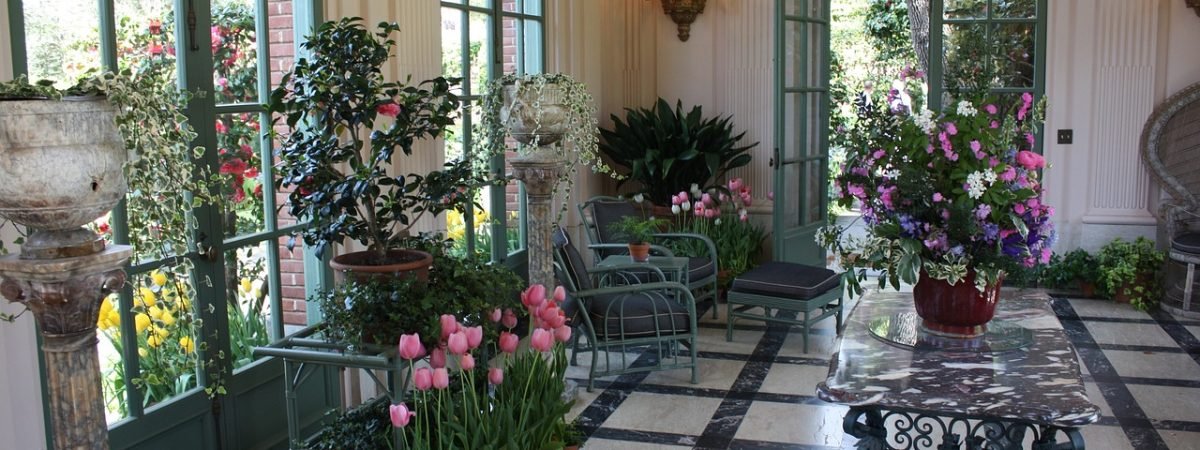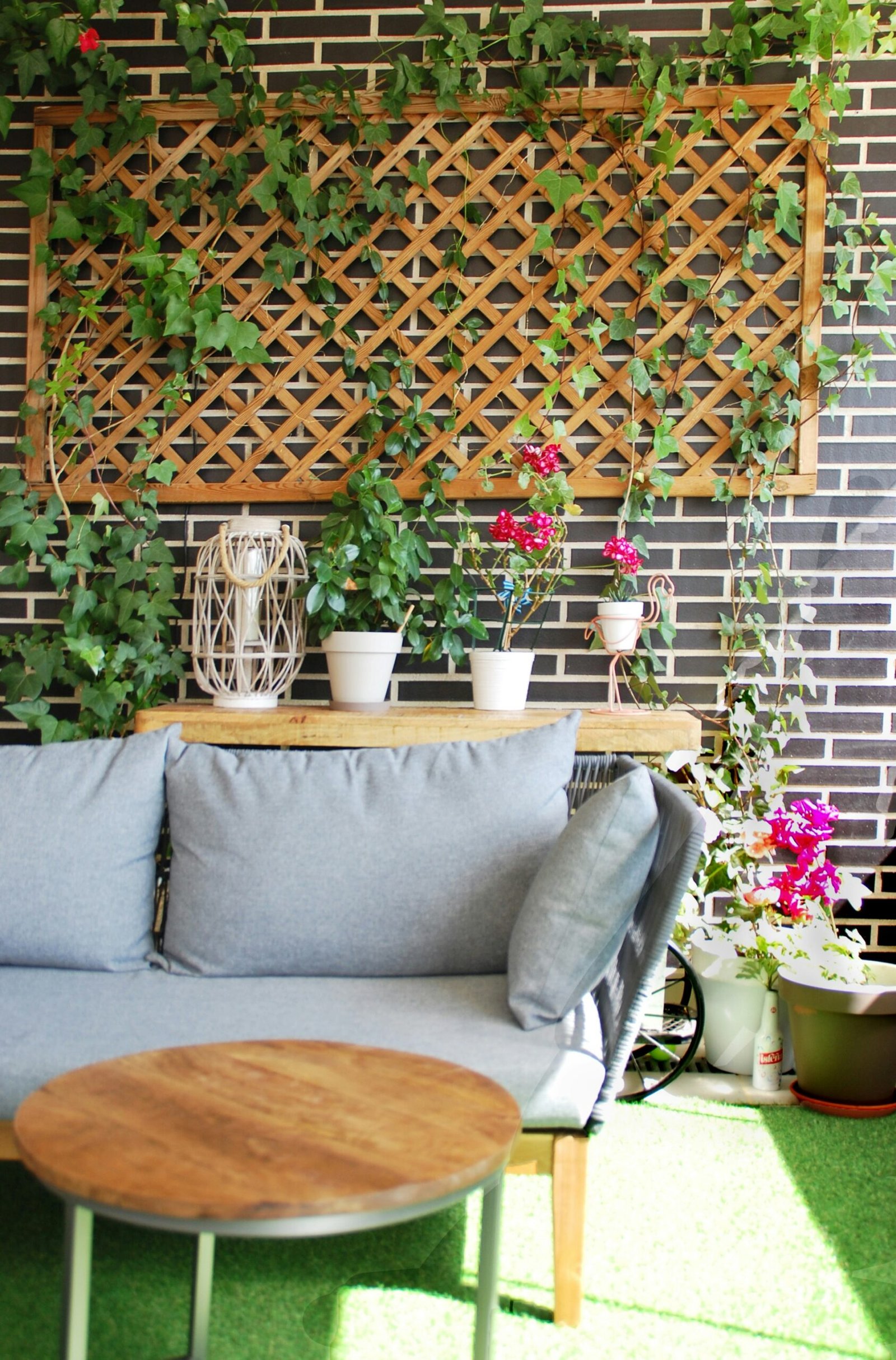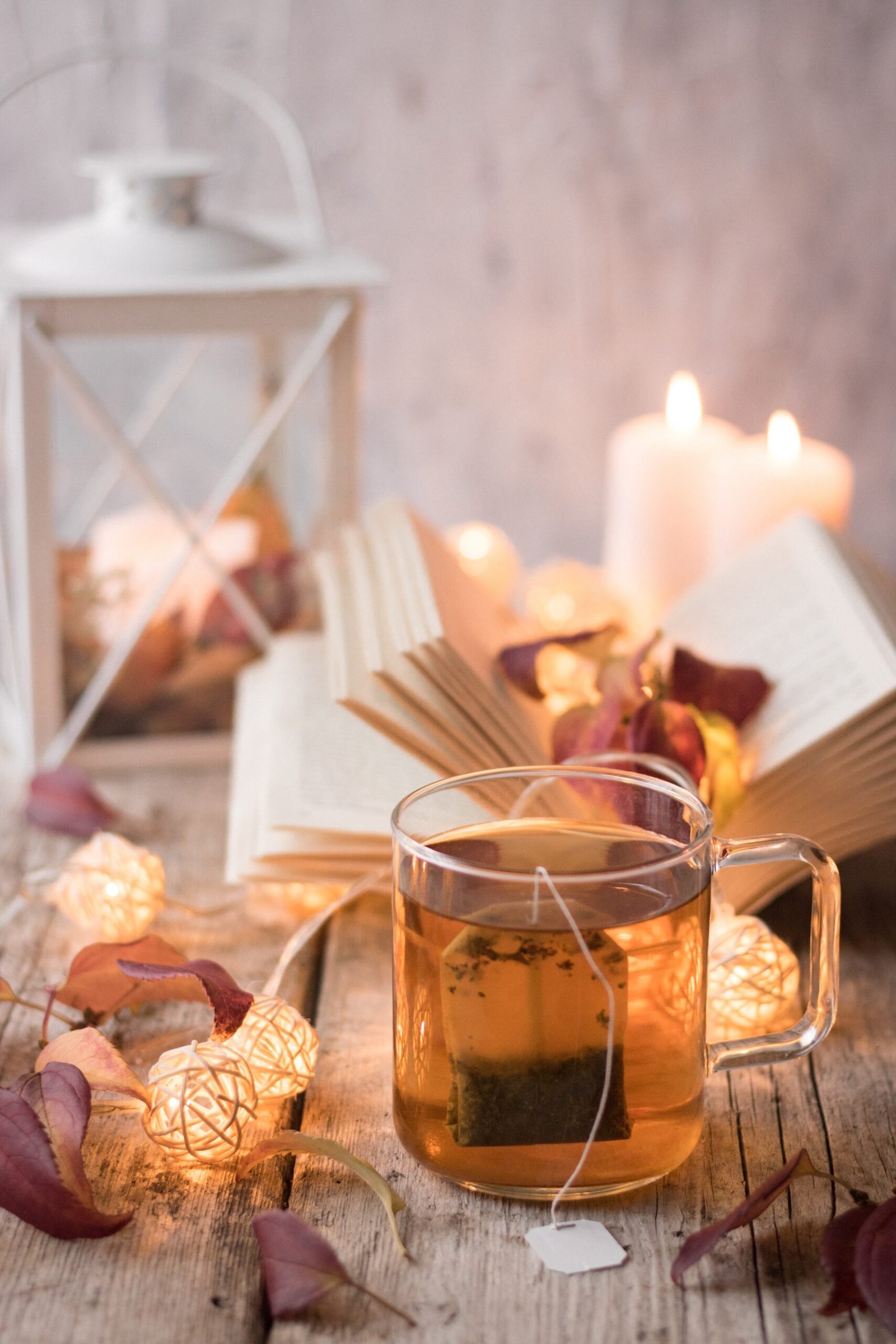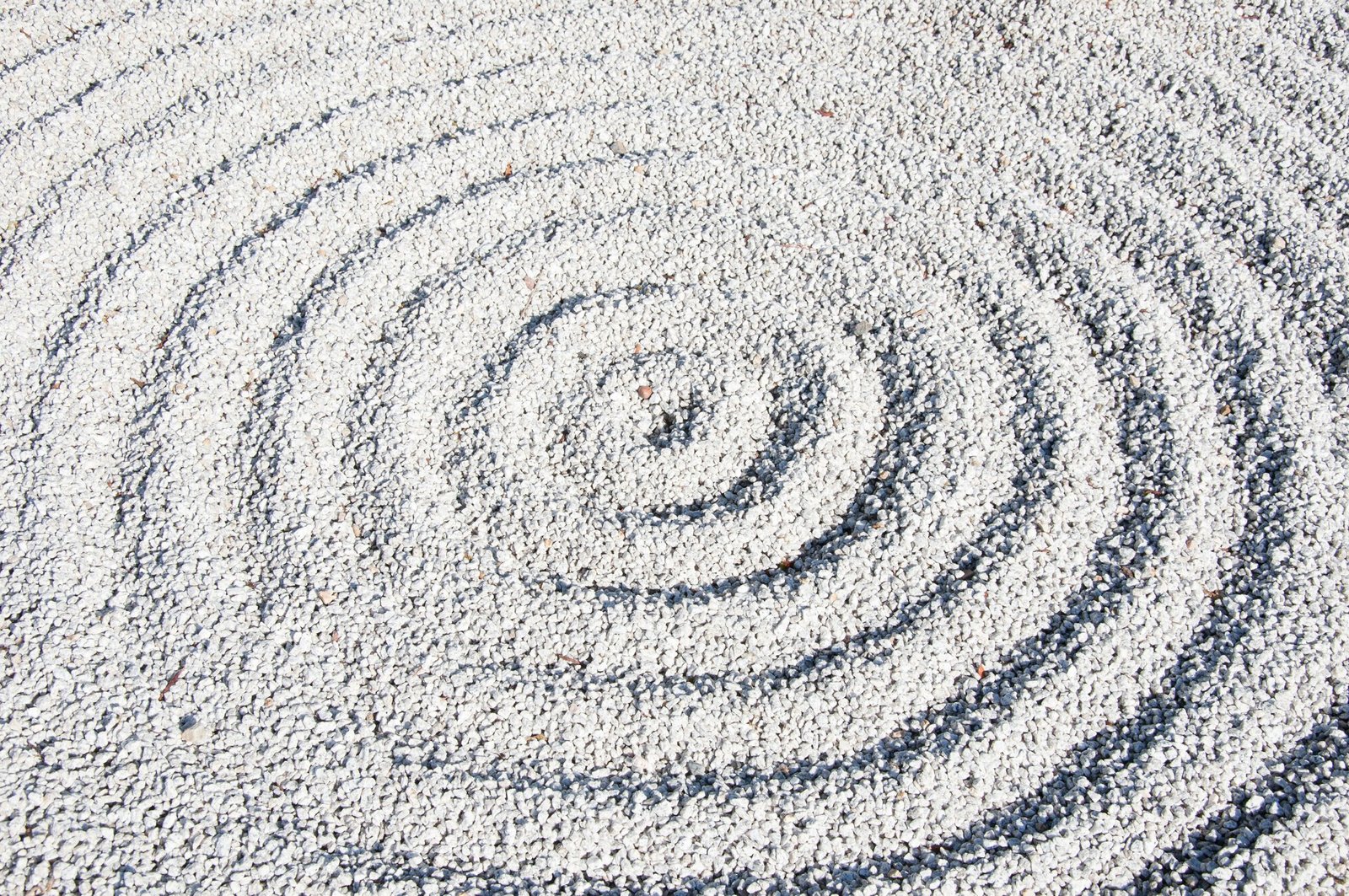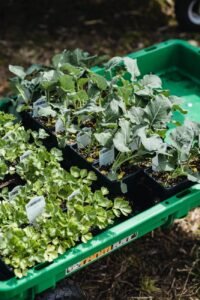A Beginner’s Guide to Indoor Gardening
Gardening is a time-honored hobby that allows us to connect with nature, cultivate beauty, and reap the rewards of our efforts. While traditional outdoor gardening is popular and rewarding, there’s another dimension of gardening that’s gaining popularity: indoor gardening. Whether you have limited outdoor space, live in an apartment, or simply want to enjoy greenery year-round, indoor gardening can be a fulfilling and enriching experience.
In this comprehensive guide, we’ll explore the world of indoor gardening, from getting started to mastering advanced techniques. By the end of this journey, you’ll have the knowledge and confidence to create your own lush indoor garden oasis.
<div><div></div></div>
Table of Contents
- Introduction
- 1: The Benefits of Indoor Gardening
- A Healthy Indoor Environment
- Year-Round Gardening
- Stress Reduction
- Aesthetic Enhancement
- 2: Types of Indoor Gardens
- Container Gardening
- Vertical Gardens
- Terrariums
- Hydroponics
- Aeroponics
- 3: Essential Tools and Materials
- Containers and Pots
- Soil and Growing Mediums
- Lighting
- Temperature and Humidity Control
- Watering and Irrigation
- Nutrients and Fertilizers
- 4: Choosing the Right Plants
- Low-Light Plants
- Medium-Light Plants
- High-Light Plants
- Flowering Plants
- Edible Plants
- 5: Setting Up Your Indoor Garden
- Selecting the Location
- Designing Your Garden
- Container Selection and Arrangement
- Choosing the Right Soil
- 6: Lighting Your Indoor Garden
- Understanding Light Requirements
- Types of Grow Lights
- Setting Up Grow Lights
- Light Duration and Intensity
- 7: Watering and Humidity
- Watering Guidelines
- Humidity Control
- Dealing with Pests and Diseases
- 8: Fertilizing Your Indoor Garden
- Understanding Plant Nutrients
- Organic vs. Synthetic Fertilizers
- Fertilizing Techniques
- 9: Maintenance and Care
- Pruning and Trimming
- Repotting
- Dealing with Common Issues
- 10: Creative Indoor Gardening Projects
- Terrarium Building
- Vertical Garden Creations
- Herb and Vegetable Gardens
- 11: Advanced Indoor Gardening
- Hydroponics and Aeroponics
- Growing Exotic Plants
- Propagation Techniques
- 12: The Joy of Indoor Gardening
- Connecting with Nature
- Sharing Your Garden
- Indoor Gardening as a Lifestyle
Introduction
Indoor gardening, also known as houseplant or interior gardening, offers a plethora of benefits that extend beyond mere aesthetics. It’s a way to reconnect with nature and bring the serenity and beauty of the outdoors into your home. This guide is designed for beginners, taking you on a step-by-step journey into the world of indoor gardening. By the end, you’ll not only have a thriving indoor garden but also a deeper appreciation for the wonders of plant life.
<div></div>
Who Is This Guide For?
This guide is for anyone interested in gardening, whether you’re a complete novice or an experienced outdoor gardener looking to explore the world of indoor plants. It’s for apartment dwellers, homeowners, and even those with just a small window sill to spare. Whether your goal is to create a cozy indoor jungle, cultivate fresh herbs for your kitchen, or simply add some greenery to your living space, this guide is for you.
Getting Started
Before you embark on your indoor gardening journey, it’s important to understand the benefits and possibilities that indoor gardening offers. You’ll learn about the positive impacts on your home environment, the potential for year-round gardening, and how indoor gardening can contribute to your well-being.
So, grab your gardening gloves, prepare your potting soil, and let’s dive into the world of indoor gardening. With the right knowledge and a bit of patience, you’ll soon be enjoying the green, serene oasis you’ve created right inside your home.
1: The Benefits of Indoor Gardening
Indoor gardening offers a multitude of benefits, from improving your living environment to enhancing your well-being. Let’s explore these advantages and discover why indoor gardening is an ideal hobby for beginners and seasoned gardeners alike.
<div></div>
A Healthy Indoor Environment
Indoor plants do more than just add a touch of green to your living space; they can significantly improve the air quality in your home. Plants act as natural air purifiers, absorbing carbon dioxide and releasing oxygen during photosynthesis. Some indoor plants, such as snake plants (Sansevieria), are particularly effective at removing common indoor pollutants like formaldehyde and benzene. As a result, the air you breathe is cleaner and fresher, which can lead to a healthier and more comfortable indoor environment.
Additionally, plants release moisture through a process called transpiration, increasing humidity levels in your home. This can be especially beneficial during the dry winter months when low humidity can lead to respiratory discomfort. The increased humidity not only benefits your health but also helps keep indoor plants thriving.
Year-Round Gardening
One of the most appealing aspects of indoor gardening is the ability to garden year-round. Unlike outdoor gardening, which is often limited by seasonal changes and weather conditions, indoor gardening allows you to cultivate plants continuously. You’re not restricted to a specific planting season, and you can enjoy the beauty of blooming flowers or the convenience of fresh herbs any time you like.
This year-round gardening is particularly advantageous for those living in regions with harsh winters or limited outdoor space. With indoor gardening, you can keep your green thumb active and enjoy the rewards of gardening throughout the entire year.
Stress Reduction
Indoor gardening has been linked to reduced stress and enhanced well-being. Caring for plants provides a sense of purpose and connection with nature. Watching your plants grow and thrive can be a source of satisfaction and relaxation. The act of gardening, from potting and pruning to simply observing your plants, can be a meditative and calming experience.
The presence of indoor plants has also been shown to lower stress levels and improve mental health. Studies have indicated that being surrounded by greenery can reduce anxiety and enhance mood. The simple act of tending to your indoor garden can be a form of therapy, offering respite from the demands of daily life.
<div></div>
Aesthetic Enhancement
Indoor plants are not only good for your health but also for the aesthetics of your home. They add natural beauty and warmth to any living space. The variety of shapes, sizes, and colors of indoor plants allows for endless creativity in interior design. Whether you prefer the sleek, modern look of minimalist succulents or the lush, tropical ambiance of large-leafed plants, indoor gardening allows you to personalize your home decor.
Indoor gardens can serve as focal points in your home, bringing life and vitality to otherwise empty corners or shelves. They can soften the lines of a room, creating a more welcoming and harmonious atmosphere. The creative possibilities are limitless, from arranging plants in hanging macramé planters to building vertical gardens on your walls.
2: Types of Indoor Gardens
Indoor gardening offers a world of possibilities, with various types of indoor gardens to suit your space, preferences, and gardening goals. In this , we’ll explore the most common types of indoor gardens, each with its unique characteristics and advantages.
- Container Gardening
Container gardening is one of the most popular indoor gardening methods. It involves growing plants in containers, such as pots, planters, or decorative vessels. Container gardening offers several advantages:
- Versatility: You can grow a wide range of plants in containers, from flowers and herbs to small vegetables.
- Portability: Containers can be moved to optimize light exposure or rearranged for aesthetic purposes.
- Limited Space: Container gardening is ideal for those with limited indoor space, such as apartment dwellers.
When choosing containers, ensure they have drainage holes to prevent overwatering, and select the appropriate potting mix for your plants. Container gardening is an excellent starting point for indoor gardeners.
<div></div>
- Vertical Gardens
Vertical gardens, also known as living walls or green walls, are an innovative and space-saving way to bring greenery indoors. These gardens are created by attaching plants to vertical structures, such as walls or frames. The benefits of vertical gardens include:
- Space Efficiency: Vertical gardens are perfect for small spaces and can turn plain walls into vibrant, living art.
- Air Quality: They contribute to improved air quality by increasing the number of plants in your home.
- Aesthetic Appeal: Vertical gardens create a stunning focal point and enhance interior decor.
Various plant species are suitable for vertical gardens, and the choice depends on factors like light conditions and your design preferences. Some plants, like epiphytes and ferns, thrive in vertical arrangements.
- Terrariums
Terrariums are self-contained ecosystems enclosed in glass containers. These miniature gardens are low-maintenance and add a touch of enchantment to your indoor space. Key advantages of terrariums include:
- Low Maintenance: Terrariums require minimal care, as the enclosed environment recycles moisture.
- Design Opportunities: You can create a wide range of terrarium styles, from lush, tropical landscapes to arid deserts.
- Space-Saving: Terrariums fit on tabletops, shelves, or even windowsills.
To build a terrarium, you’ll need a clear glass container, small stones for drainage, activated charcoal to filter air, potting mix, and a selection of miniature plants. The design possibilities are limitless, making terrariums a creative and attractive indoor gardening option.
- Hydroponics
Hydroponics is a modern approach to indoor gardening that doesn’t use soil. Instead, plants grow in nutrient-rich water solutions. Hydroponics offers several advantages:
- Faster Growth: Hydroponic systems provide plants with optimal nutrients, leading to accelerated growth.
- Space Efficiency: Hydroponic systems can be compact and fit well in small spaces.
- Reduced Pests: Without soil, hydroponic gardens are less susceptible to soil-borne pests.
Various hydroponic systems are available, such as deep water culture, nutrient film technique, and wick systems. Hydroponics is an excellent choice for those interested in efficient and high-yield indoor gardening.
- Aeroponics
Aeroponics takes soil-less gardening a step further by suspending plant roots in air and delivering nutrients through misting. This method is known for its efficiency:
- High Growth Rates: Aeroponics promotes rapid plant growth and high yields.
- Water Efficiency: It uses significantly less water compared to traditional gardening.
- Space-Saving: Aeroponic systems can be compact and suitable for indoor use.
Aeroponics is a great choice for those looking to experiment with advanced indoor gardening techniques. It’s especially popular for growing herbs, lettuce, and other leafy greens.
3: Essential Tools and Materials
To create a thriving indoor garden, you’ll need a few essential tools and materials. Understanding what to use and how to use it will set you on the path to successful indoor gardening. In this , we’ll cover the basics, from containers and pots to lighting and nutrient solutions.
Containers and Pots
Choosing the right containers and pots is crucial for the health and growth of your indoor plants. Here are some key factors to consider:
- Drainage: Ensure that your containers have drainage holes. Proper drainage prevents waterlogged soil, which can lead to root rot. If your container lacks holes, you can add a layer of rocks or drainage material at the bottom.
- Size: Select pots that provide enough room for your plants’ roots to grow. A pot that’s too small can restrict root development, while one that’s too large can lead to overwatering.
- Material: Common materials for pots include clay, ceramic, plastic, and fabric. Each has its pros and cons. Clay pots are porous and allow for better aeration but dry out quickly. Plastic pots retain moisture but may not offer as much aeration. Consider the specific needs of your plants when choosing a material.
- Aesthetic: Choose containers that match your decor and personal style. You can find a wide range of pot designs, from classic terracotta to modern, decorative containers.
Soil and Growing Mediums
Selecting the right soil or growing medium is essential for your indoor plants. Consider the following factors:
- Potting Mix: Use a high-quality potting mix designed for indoor plants. These mixes are well-draining and typically contain a blend of organic materials like peat, coconut coir, and perlite.
- Specialized Mixes: Some plants, such as orchids or succulents, require specific soil mixes tailored to their needs. Research your plant’s requirements and use the appropriate mix.
- Aeration and Drainage: Good aeration and drainage are vital for healthy roots. Avoid garden soil, which may become compacted and hinder drainage. Mixing in perlite or vermiculite can improve aeration.
- Sterilization: Ensure that your soil or growing medium is free from pests and diseases. Some gardeners prefer to sterilize their mix before use to eliminate potential problems.
Lighting
Indoor plants need the right amount and quality of light to thrive. The amount of light a plant requires depends on its species, so research your plants’ needs. Here’s what you need to know about indoor plant lighting:
- Natural Light: If possible, position your plants near windows with indirect sunlight. South-facing windows provide the most light, while north-facing windows provide the least. East and west-facing windows offer moderate light levels.
- Artificial Light: If natural light is insufficient, consider using artificial grow lights. LED grow lights are energy-efficient and can provide specific light spectrums needed for plant growth. Position the lights a few inches above your plants and adjust the duration based on your plant’s needs.
- Duration: Most indoor plants require around 12-16 hours of light per day. If using artificial lighting, set timers to ensure your plants receive the right amount of light.
Temperature and Humidity Control
Indoor plants have specific temperature and humidity requirements. Here’s what to consider:
- Temperature: Most indoor plants prefer temperatures between 60-75°F (15-24°C). Avoid exposing your plants to extreme temperature fluctuations or drafts.
- Humidity: Indoor environments can be dry, especially in the winter. Some plants benefit from increased humidity. You can use a humidity tray, room humidifier, or mist your plants regularly to raise humidity levels.
4: Choosing the Right Plants
Selecting the right plants is a critical step in creating a successful indoor garden. The suitability of the plants for your indoor space depends on several factors, including light conditions, care requirements, and your personal preferences. In this , we’ll guide you through the process of choosing the perfect indoor plants for your garden.
Low-Light Plants
If your indoor space receives minimal natural light, low-light plants are your best choice. These plants have adapted to thrive in conditions with little direct sunlight. Common low-light plants include:
- Snake Plant (Sansevieria): Also known as the mother-in-law’s tongue, this hardy plant is nearly indestructible and can tolerate low light and neglect.
- Peace Lily (Spathiphyllum): Peace lilies are prized for their elegant white blooms and their ability to thrive in low-light environments.
- ZZ Plant (Zamioculcas zamiifolia): ZZ plants are excellent low-light options and require minimal maintenance.
- Pothos (Epipremnum aureum): Pothos vines are known for their heart-shaped leaves and can adapt to various light conditions.
Medium-Light Plants
For spaces with moderate to bright indirect light, medium-light plants are ideal. These plants can thrive with more sunlight than low-light varieties. Consider the following options:
- Spider Plant (Chlorophytum comosum): Spider plants are attractive, air-purifying plants that do well in medium to bright light.
- Fiddle Leaf Fig (Ficus lyrata): These plants feature large, glossy leaves and thrive in bright, indirect light.
- Philodendron (Philodendron spp.): Philodendrons come in various species and can adapt to different light conditions.
- African Violet (Saintpaulia spp.): African violets produce colorful blooms and prefer bright, indirect light.
High-Light Plants
If your indoor space receives ample natural light, high-light plants will flourish. These plants require direct sunlight or bright, indirect light to thrive. Consider these options:
- Succulents (Various Genera): Succulents, including echeverias and haworthias, are known for their ability to thrive in bright, sunny conditions.
- Cacti (Various Genera): Cacti are well-suited to high-light areas and come in numerous shapes and sizes.
- Aloe Vera (Aloe barbadensis miller): Aloe vera is not only an attractive succulent but also has soothing properties for minor burns and skin irritations.
- Jade Plant (Crassula ovata): Jade plants are sturdy and can tolerate bright, indirect light.
- Herbs (Various Herbs): If you’d like to grow herbs indoors, options like basil, rosemary, and oregano require plenty of light.
Flowering Plants
For those who want to add a burst of color to their indoor space, flowering plants are a wonderful choice. Flowering plants come in various light requirements, so you can select the appropriate species based on your available light. Some popular options include:
- Orchids (Orchidaceae): Orchids are renowned for their striking and elegant flowers, but they require specific care and moderate to bright, indirect light.
- African Marigold (Tagetes erecta): These vibrant orange and yellow blooms thrive in bright light.
- Geranium (Pelargonium spp.): Geraniums produce clusters of colorful flowers and do well in sunny locations.
- African Violet (Saintpaulia spp.): As mentioned earlier, African violets are suitable for medium-light environments and offer lovely blooms.
When choosing your indoor plants, consider your available light, the maintenance level you’re comfortable with, and your personal preferences. Remember that even within these categories, there are countless species and varieties to explore, allowing you to create a diverse and visually appealing indoor garden.
5: Setting Up Your Indoor Garden
Setting up your indoor garden involves several essential steps to ensure that your plants thrive. This will guide you through the process, from selecting the right location to arranging your containers and preparing the soil or growing medium.
- Choosing the Right Location
The location of your indoor garden is crucial to your plants’ health. Consider the following factors when selecting a spot:
- Light Conditions: Place your plants where they can receive the appropriate amount of light based on their specific requirements. Ensure that they receive adequate but not direct sunlight, as this can scorch their leaves.
- Temperature: Most indoor plants prefer consistent room temperatures. Avoid placing your plants near radiators, air conditioning units, or drafty windows where temperature fluctuations can occur.
- Humidity: Some plants benefit from higher humidity levels. If your indoor environment is very dry, you can increase humidity by using a room humidifier or placing a tray of water near your plants.
- Arranging Your Containers
Proper arrangement of your containers or pots ensures that your indoor garden is visually appealing and practical. Consider these tips:
- Group Similar Plants: Arrange your plants in clusters with similar light and water requirements. This makes it easier to care for them and provides an attractive display.
- Use Stands or Shelves: Elevating some of your plants on stands or shelves can create an interesting visual arrangement and maximize space.
- Rotate Your Plants: To ensure even growth and prevent one side of your plants from reaching towards the light source, periodically rotate your containers.
- Selecting the Right Soil or Growing Medium
The type of soil or growing medium you use greatly influences your plants’ health. Here are some guidelines:
- Potting Mix: Choose a high-quality potting mix designed for your specific plant types (e.g., cactus mix, orchid mix). Potting mixes are well-draining and contain the necessary nutrients.
- Ensure Proper Drainage: Always use containers with drainage holes, and add a layer of rocks or drainage material at the bottom of the pot to prevent waterlogging.
- Sterilization: It’s a good practice to sterilize your soil or growing medium before use to eliminate pests and diseases. You can do this by baking it in the oven or microwaving it.
- Repotting: Over time, your plants may outgrow their containers. When this happens, it’s time to repot them into slightly larger containers with fresh potting mix.
- Watering and Care
Indoor plants have specific watering and care requirements. Here’s what you need to know:
- Watering: Water your plants according to their individual needs. Most indoor plants prefer to dry out slightly between waterings, so be sure not to overwater.
- Fertilizing: Indoor plants benefit from occasional fertilization. Use a balanced, water-soluble fertilizer and follow the package instructions.
- Pruning and Deadheading: Regularly prune your plants to remove dead or yellowing leaves and spent flowers. This encourages healthy growth and a tidy appearance.
- Pest Control: Keep an eye out for common indoor plant pests like aphids, spider mites, and mealybugs. If you notice an infestation, take prompt action to control it.
- Support and Training: Some plants, like vining or climbing species, may require support or training to grow in a desired direction.
By following these steps and considering the specific needs of your plants, you’ll be well on your way to creating a vibrant and thriving indoor garden. In the next , we’ll delve into common challenges that indoor gardeners may face and how to address them effectively. Whether it’s dealing with pests, diseases, or the occasional yellowing leaf, you’ll learn how to keep your indoor garden in top condition.
6: Overcoming Common Indoor Gardening Challenges
Indoor gardening can be incredibly rewarding, but like any form of gardening, it comes with its own set of challenges. In this , we’ll explore some common issues that indoor gardeners face and discuss effective solutions for maintaining a healthy and vibrant indoor garden.
- Dealing with Pests
Common Indoor Plant Pests
Indoor plants are not immune to pests, and a few common culprits include:
- Aphids: These small, soft-bodied insects cluster on plant stems and leaves, sucking out sap and causing damage.
- Mealybugs: Mealybugs are white, waxy insects that appear as white cottony clusters on plant leaves and stems.
- Spider Mites: These tiny arachnids create fine webbing on plants and can cause leaves to become stippled and discolored.
Pest Control
To deal with pests effectively:
- Isolate Infested Plants: Remove infested plants from healthy ones to prevent the pests from spreading.
- Manual Removal: Use a gentle stream of water or a soft brush to physically remove pests from your plants.
- Natural Predators: Introduce natural predators like ladybugs or lacewings to your indoor garden.
- Neem Oil: Neem oil is an effective, natural insecticide that can help control many common pests.
- Addressing Diseases
Indoor plants can also fall victim to diseases. Some common issues include fungal diseases, root rot, and powdery mildew.
Disease Management
- Isolate Affected Plants: Similar to dealing with pests, it’s essential to isolate plants with diseases to prevent the issue from spreading.
- Pruning: Prune and remove affected plant parts to halt the spread of disease.
- Proper Watering: Overwatering can lead to root rot, so it’s crucial to maintain appropriate moisture levels.
- Fungicides: In severe cases, you may need to use fungicides as a last resort. Always follow the instructions on the product label.
- Yellowing Leaves
Yellowing leaves are a common issue and can be caused by various factors, including overwatering, underwatering, inadequate light, or nutrient deficiencies.
Addressing Yellowing Leaves
- Watering: Ensure you’re watering your plants according to their specific requirements. Let the soil slightly dry out between waterings.
- Light: Ensure your plants are receiving the right amount and quality of light. Move them closer to a light source if necessary.
- Nutrients: If yellowing is due to nutrient deficiencies, consider feeding your plants with a balanced, water-soluble fertilizer.
- Leggy Growth
Leggy growth occurs when a plant stretches towards the light source, resulting in long, spindly stems.
Preventing Leggy Growth
- Proper Light Placement: Position your plants where they receive even light exposure to prevent them from reaching towards a single light source.
- Rotate Your Plants: Regularly rotate your plants to promote even growth.
- Pruning: Prune your plants to encourage bushier, more compact growth.
- Leaves Browning at the Edges
Browning leaf edges, or leaf margin burn, can occur due to dry air, excessively bright light, or the buildup of minerals in the soil.
Dealing with Browning Leaf Edges
- Humidity: Increase humidity around your plants by using a room humidifier or misting them regularly.
- Adjust Light: If your plants are receiving too much direct light, move them to a slightly shadier spot.
- Flushing the Soil: If mineral buildup is causing the issue, flush the soil with water to remove excess salts.
By understanding and addressing these common challenges, you can enjoy a thriving indoor garden that adds beauty and greenery to your indoor space. In the next , we’ll explore the rewards of indoor gardening and how it can positively impact your well-being and living environment.
7: The Rewards of Indoor Gardening
While indoor gardening does come with its share of challenges, the rewards it offers can be truly fulfilling. In this , we’ll explore the various benefits of indoor gardening and how it can positively impact your well-being and living environment.
- Improved Air Quality
Indoor plants are natural air purifiers. They absorb carbon dioxide and release oxygen during photosynthesis. Many plants also have the ability to remove toxins and chemicals from the air. This can lead to improved indoor air quality, which is particularly beneficial for those who suffer from allergies or respiratory conditions.
- Stress Reduction
Gardening, even indoors, can be a therapeutic and stress-relieving activity. Caring for your indoor plants can help reduce stress and anxiety. The act of tending to your garden, nurturing plants, and observing their growth can be a calming and meditative experience.
- Connection to Nature
Indoor gardening allows you to bring a piece of the natural world into your living space. It provides a connection to nature, especially if you live in an urban environment or in a location with long winters. Surrounding yourself with greenery can evoke a sense of tranquility and a deeper connection to the natural world.
- Enhanced Aesthetics
Indoor plants are not just functional; they are also decorative. They can enhance the aesthetics of your living space, making it more inviting and visually appealing. The variety of plant sizes, shapes, and colors allows you to express your personal style and creativity.
- Productivity and Creativity
Studies have shown that the presence of indoor plants can boost productivity and creativity. They can create a more stimulating and inspiring environment, which is especially valuable for home offices or creative spaces.
- Learning and Personal Growth
Indoor gardening is a learning experience. It encourages personal growth as you acquire knowledge about different plant species and their care requirements. You’ll learn to be patient, observant, and responsive to the needs of your plants, which are valuable life skills.
- Sustainable Living
Growing your own indoor garden can promote sustainable living. It reduces your carbon footprint by decreasing the need to purchase cut flowers or imported plants. You can also grow herbs and vegetables indoors, contributing to your sustainable lifestyle.
- Sense of Accomplishment
Watching your plants thrive and flourish under your care can provide a profound sense of accomplishment. It’s a tangible and rewarding hobby that can boost your self-esteem and confidence.
- Companionship
For many, indoor plants become more than just decorations. They can offer a sense of companionship and purpose. Taking care of living beings can be emotionally fulfilling and provide a sense of responsibility.
- Connection with Seasons
Indoor gardening allows you to experience the changing of the seasons more intimately. You can grow different plants that flower or produce fruit at different times of the year, keeping you connected to the cyclical nature of life.
8: Indoor Gardening Tips and Tricks
As you continue your indoor gardening journey, there are several tips and tricks that can help you maintain a thriving garden. In this , we’ll explore these strategies to ensure the long-term health and vitality of your indoor plants.
- Consistent Watering
Proper watering is essential for the health of your indoor plants. Here are some watering tips:
- Water thoroughly: When you water, do so thoroughly to ensure the entire root system receives moisture. Water until you see excess water draining from the pot’s drainage holes.
- Watering frequency: Water your plants according to their specific needs. Some plants prefer to dry out slightly between waterings, while others like consistently moist soil. Avoid overwatering, which can lead to root rot.
- Use a saucer: Place a saucer under your pots to catch excess water and prevent water damage to your furniture or floors.
- Humidity Control
Maintaining the right humidity levels is crucial for certain plants, especially in dry indoor environments. Consider these strategies:
- Group plants: Grouping your plants together can create a microenvironment with higher humidity as they release moisture through transpiration.
- Use a humidity tray: Place a tray filled with water and pebbles near your plants. As the water evaporates, it increases humidity around the plants.
- Humidifier: If your indoor space is exceptionally dry, a room humidifier can help maintain optimal humidity levels.
- Pruning and Deadheading
Regular pruning and deadheading help keep your plants healthy and attractive:
- Remove dead or yellowing leaves: Prune these leaves to encourage new growth and maintain the overall health of the plant.
- Deadhead spent flowers: If your plants are flowering, removing spent blooms can promote continuous flowering and prevent the plant from directing energy to seed production.
- Fertilization
Proper fertilization is vital for the well-being of your plants:
- Use a balanced fertilizer: Choose a water-soluble, balanced fertilizer. Follow the label instructions, and fertilize your plants during their active growing season.
- Monitor plant-specific needs: Different plants have varying nutrient requirements. Some may benefit from specialized fertilizers. Research your specific plants to provide the best care.
- Pest Management
Keep an eye out for pests and have a plan to address them:
- Inspect regularly: Regularly inspect your plants for signs of pests. Early detection is essential for effective pest control.
- Isolate infested plants: If you find a plant with pests, isolate it from your other plants to prevent the infestation from spreading.
- Use natural remedies: Consider using natural remedies like neem oil or insecticidal soap to control pests.
- Rotation and Light Adjustment
Ensure even growth and health by rotating your plants:
- Rotate your plants: Periodically rotate your pots to ensure all sides of your plants receive adequate light. This prevents lopsided or uneven growth.
- Adjust light exposure: If your plants are not thriving due to insufficient or excessive light, consider moving them to a more suitable location.
- Repotting
Over time, your plants may outgrow their containers:
- Assess root-bound plants: Check your plants for signs of being root-bound, such as roots circling the pot’s surface or emerging from the drainage holes.
- Choose the right time: Repot your plants in the spring when they are entering their active growing season.
- Select the appropriate pot: Choose a slightly larger pot with good drainage to accommodate your plant’s growth.
By applying these indoor gardening tips and tricks, you’ll be better equipped to maintain a lush, healthy, and thriving indoor garden. With patience and care, you can enjoy the beauty of nature within the comfort of your own home.
9: Indoor Gardening Ideas and Inspiration
Indoor gardening provides a world of possibilities for creativity and personal expression. In this , we’ll explore various indoor gardening ideas and offer inspiration for creating unique and captivating indoor gardens.
- Create a Miniature Garden
Miniature gardens, also known as fairy gardens, offer a delightful and whimsical way to bring the enchantment of the outdoors into your home. You can use small containers, such as teacups, terrariums, or shallow pots, to create tiny landscapes with miniature plants, tiny furniture, and even figurines. These tiny worlds can be placed on tables, shelves, or windowsills, adding a touch of magic to your indoor space.
- Vertical Gardening
Maximize your space by incorporating vertical gardens into your home. Use wall-mounted planters, trellises, or living wall systems to grow a variety of plants vertically. Not only does this make your walls visually appealing, but it also creates a lush and green backdrop in your living space. Choose plants that thrive in vertical arrangements, such as pothos, philodendrons, or air plants.
- Herb and Kitchen Garden
One of the most practical indoor gardening ideas is to create a kitchen garden. Grow your own herbs, such as basil, rosemary, mint, and chives, right in your kitchen. Use decorative pots or planters that complement your kitchen’s decor. Not only will you have fresh herbs at your fingertips for cooking, but the greenery also adds a vibrant touch to your culinary space.
- Terrariums
Terrariums are self-contained ecosystems that can thrive indoors. These mini glass-enclosed gardens are easy to create and maintain. You can use clear glass containers or vintage glassware to build your terrarium. Select plants like succulents, air plants, or mosses that thrive in the closed environment. Terrariums can be placed on tabletops, desks, or hung as decorative pieces.
- Bonsai Trees
Bonsai is the art of cultivating miniature trees. These tiny trees are a testament to patience and precision. Bonsai trees make elegant and artistic additions to your indoor garden. They require careful care, including regular pruning and shaping. Each bonsai tree is a unique work of living art.
- Atrium or Indoor Garden Room
If you have ample space and resources, consider creating an indoor garden room or atrium. These dedicated indoor garden spaces feature abundant natural light and a variety of plants. They can be designed with walkways, seating areas, and even small water features. An indoor garden room is a serene oasis within your home, allowing you to immerse yourself in nature.
- Plant Displays
Get creative with how you display your plants. Use decorative ladders, repurposed wooden crates, floating shelves, or hanging macramé planters to showcase your indoor greenery. Creating unique and eye-catching displays can turn your indoor garden into a living work of art.
- Succulent Arrangements
Succulents come in various shapes, sizes, and colors, making them ideal for creating striking arrangements. You can mix and match different succulent species in a single container to form a visually appealing succulent garden. Succulent arrangements are low-maintenance and perfect for beginners.
- Moss Gardens
Moss is an underappreciated but incredibly lush and green addition to indoor spaces. Moss gardens can be cultivated in shallow containers, and they thrive in low-light conditions. They bring a soft and soothing quality to your indoor garden.
- Repurposed Planters
Add a touch of eco-friendliness to your indoor garden by using repurposed planters. Old tea tins, antique drawers, vintage boots, and other upcycled items can be transformed into unique and charming plant containers. Repurposing adds character and sustainability to your indoor garden.
Use these indoor gardening ideas to spark your creativity and design a garden that complements your style and space. Whether you opt for miniature gardens, vertical arrangements, or terrariums, indoor gardening offers endless possibilities for enhancing your indoor environment with the beauty of nature.
10: Sharing Your Indoor Garden
Sharing the joys of your indoor garden with others can be a rewarding experience. In this , we’ll explore ways to share your indoor garden with friends, family, and even the broader community.
- Hosting Indoor Garden Tours
Consider hosting indoor garden tours for friends, family, and fellow gardening enthusiasts. Showcase your indoor garden’s beauty and uniqueness. Share your knowledge about the plants you’re growing, the care you provide, and the personal touches you’ve added to your indoor garden. These tours can be informal gatherings or more structured events, depending on your preferences.
- Joining Gardening Clubs and Communities
Connect with local gardening clubs or online gardening communities. These groups often organize events, workshops, and plant swaps. They provide a platform to share your indoor gardening experiences, learn from others, and get inspired by different gardening approaches.
- Organizing Workshops
Share your indoor gardening expertise by organizing workshops or classes. You can teach others how to create and care for indoor gardens, propagate plants, or design terrariums. Workshops can be conducted in your home, community centers, or online platforms.
- Plant Swaps
Participate in or organize plant swaps with fellow gardeners. These events allow you to exchange plant cuttings, baby plants, or unique specimens. It’s a fantastic way to diversify your indoor garden while connecting with other plant enthusiasts.
- Collaborate with Local Businesses
Partner with local businesses, such as coffee shops, boutiques, or restaurants, to display your indoor garden. Businesses often appreciate the aesthetic value of indoor plants, and your garden can add to their ambiance. In return, you can share your contact information or social media handles with customers interested in your plants.
- Social Media and Blogging
Share your indoor garden journey on social media platforms and blogs. Post pictures, share your experiences, and provide tips and insights. Engage with fellow indoor gardeners from around the world and build a community of plant enthusiasts.
- Offer Plant Care Services
Consider offering plant care services to individuals or businesses. Many people appreciate the beauty of indoor plants but lack the knowledge or time to care for them. You can provide regular plant maintenance, watering, and even repotting services. This not only allows you to share your passion but also creates a small business opportunity.
- Create an Indoor Garden Instagram
Dedicate an Instagram account solely to your indoor garden. Use this platform to post daily updates, care tips, and stunning photos of your plants. Instagram is a visual platform where you can connect with a broad audience of plant lovers.
- Open Your Indoor Garden for Events
Consider opening your home and indoor garden for events like plant-themed parties, workshops, or even small weddings. It can be a unique and charming venue for various gatherings.
- Offer Plants as Gifts
Give the gift of indoor plants to friends and loved ones. Sharing a piece of your indoor garden with others can introduce them to the joy of plant care and create connections based on a shared interest.
Sharing your indoor garden not only fosters a sense of community but also spreads the love of gardening. Whether it’s through hosting tours, joining gardening clubs, or engaging on social media, sharing your indoor garden can be a source of inspiration and connection with like-minded individuals.
11: Maintaining Your Indoor Garden as It Grows
As your indoor garden matures and flourishes, it’s crucial to maintain it effectively to ensure the health and well-being of your plants. In this , we’ll delve into the ongoing care required as your indoor garden continues to grow and thrive.
- Repotting
As your plants grow, they may outgrow their containers. It’s essential to repot them into larger pots when you notice their roots becoming root-bound. Typically, this should be done every 1-2 years. Choose a pot that is 1-2 inches larger in diameter than the current one and provides proper drainage.
- Pruning and Trimming
Regular pruning and trimming are necessary to control the shape and size of your plants. Trim leggy growth, remove dead or yellowing leaves, and cut back overgrown branches. Pruning also helps to promote bushier and healthier growth.
- Cleaning
Regularly clean your plants and their containers. Dust can accumulate on leaves, which can hinder photosynthesis. Gently wipe the leaves with a damp cloth or give your plants a light shower to remove dust and keep them looking vibrant.
- Fertilizing
Continue to fertilize your plants as needed, especially during their active growing season. Choose a balanced, water-soluble fertilizer, and follow the recommended dosage on the label. Avoid over-fertilizing, as this can lead to nutrient imbalances.
- Pest Management
Keep a close watch for pests, as they can still find their way into your indoor garden. Regularly inspect your plants for signs of infestations, such as discolored leaves, webbing, or tiny insects. Address any pest issues promptly using natural remedies or insecticidal soaps.
- Support for Taller Plants
If you have tall or vining plants, provide proper support to prevent them from toppling over. Stake or trellis your plants to help them grow upward and maintain their shape.
- Reevaluate Placement
As your indoor garden grows, reevaluate the placement of your plants. Some may require more or less light than they did initially. Adjust their positions to ensure they receive the right amount of light and air circulation.
- Monitor Humidity
Indoor environments can become dry, especially during the winter. Monitor the humidity levels in your home and use strategies like humidity trays, grouping plants together, or using a room humidifier to maintain ideal humidity for your plants.
- Learn About Plant-Specific Care
Different plants have specific care requirements. Take the time to research and understand the unique needs of each plant in your indoor garden. Some may need more or less water, light, or specialized care.
- Propagation
As your plants grow, you may have opportunities to propagate them. Propagation can be a rewarding way to expand your indoor garden or share plants with others. Learn about the propagation techniques for the specific plants in your collection.
By dedicating time and effort to the ongoing maintenance of your indoor garden, you can ensure that it remains a vibrant and healthy oasis within your home. Your indoor garden will continue to bring beauty and tranquility to your living space as it flourishes and matures.
12: Troubleshooting Common Indoor Gardening Issues
Despite your best efforts, you may encounter issues in your indoor garden from time to time. In this , we’ll explore common problems that indoor gardeners face and provide solutions to help you address them effectively.
- Yellowing Leaves
Issue: Yellowing leaves can be a sign of various problems, including overwatering, underwatering, nutrient deficiencies, or pests.
Solution:
- Check the soil moisture to determine if overwatering or underwatering is the issue.
- Adjust your watering schedule accordingly.
- Ensure your plants are receiving the right amount of light.
- Examine your plants for signs of pests and treat if necessary.
- Consider a balanced, water-soluble fertilizer if nutrient deficiency is suspected.
- Brown Leaf Tips
Issue: Brown leaf tips are often a result of low humidity, underwatering, or excessive fertilization.
Solution:
- Increase humidity around your plants using a humidity tray or room humidifier.
- Adjust your watering routine to ensure the soil remains consistently moist, but not waterlogged.
- If you’ve been over-fertilizing, reduce the frequency and strength of your fertilization.
- Leggy Growth
Issue: Leggy growth occurs when plants stretch toward the light source, resulting in weak, elongated stems.
Solution:
- Place your plants in a location with more direct light.
- Rotate your plants regularly to ensure even growth.
- Prune back leggy growth to encourage bushier growth.
- Slow Growth
Issue: Slow growth can be due to insufficient light, poor soil quality, or issues with root health.
Solution:
- Provide more light by placing your plants in a brighter location.
- Check the soil quality and consider repotting with fresh, well-draining soil.
- Inspect the roots for any signs of rot or disease and address if needed.
- Dropping Leaves
Issue: Leaf drop can be a reaction to stress, changes in environmental conditions, or root problems.
Solution:
- Ensure consistent care and environmental conditions to reduce stress on your plants.
- Check the health of the roots and address any issues.
- If your plant naturally sheds older leaves, this may not be a problem.
- Pest Infestations
Issue: Pests such as spider mites, aphids, or mealybugs can infest indoor plants.
Solution:
- Inspect your plants regularly for signs of pests.
- Isolate infested plants to prevent the infestation from spreading.
- Use natural remedies like neem oil or insecticidal soap to control pests.
- Mold or Mildew
Issue: Mold or mildew can develop on the soil surface or on plant leaves due to excessive moisture.
Solution:
- Reduce watering to allow the soil to dry out between waterings.
- Improve air circulation by placing a fan in the room or near your plants.
- Isolate affected plants to prevent the spread of mold or mildew.
- Nutrient Deficiencies
Issue: Yellowing or discolored leaves can indicate nutrient deficiencies, such as a lack of nitrogen, iron, or other essential nutrients.
Solution:
- Choose a balanced, water-soluble fertilizer suitable for your plants.
- Follow the label instructions for fertilization and adjust based on your plant’s specific needs.
- Wilting
Issue: Wilting is often a sign of underwatering, overwatering, or root problems.
Solution:
- Adjust your watering routine to maintain consistent soil moisture.
- Inspect the roots for any issues, such as rot or root-bound conditions.
- If the wilting persists, consider repotting or root pruning.
- Stunted Growth
Issue: Stunted growth can be due to a variety of factors, including poor soil quality, inadequate light, or pests.
Solution:
- Address soil quality by repotting with fresh, well-draining soil.
- Ensure your plants receive adequate light for their specific needs.
- Inspect for pests and treat as necessary.
By recognizing and addressing these common indoor gardening issues promptly, you can maintain the health and vitality of your indoor plants and enjoy a thriving indoor garden. Remember that every plant is unique, so understanding the specific needs of your plants is crucial for successful care.
13: Reviving and Salvaging Indoor Plants
Despite your best efforts, some indoor plants may face severe challenges. In this , we’ll explore strategies for reviving and salvaging struggling plants, giving you the tools to breathe new life into your indoor garden.
- Identify the Problem
Before attempting to revive a struggling plant, it’s essential to identify the root cause of its issues. Common problems include overwatering, underwatering, pest infestations, and diseases. Carefully examine your plant for signs of these issues.
- Trim and Prune
If your plant has leggy growth, dead or yellowing leaves, or unhealthy stems, pruning can help stimulate new growth and remove any damaged or diseased parts. Use clean, sharp pruning shears to make precise cuts.
- Repotting
If the root system of your plant is overcrowded, root-bound, or showing signs of rot, consider repotting it. Choose a pot that is slightly larger than the current one and provides good drainage. Gently remove the plant from its old container, trim any damaged roots, and replant it in fresh, well-draining soil.
- Adjust Watering
Incorrect watering is a common issue for struggling plants. Review your watering habits and adjust them to meet your plant’s specific needs. Make sure the pot has proper drainage to prevent overwatering.
- Treat for Pests and Diseases
If you identify pest or disease issues, treat your plant promptly. Use natural remedies like neem oil or insecticidal soap for pests. For fungal diseases, remove affected parts and apply a suitable fungicide.
- Change Location
Sometimes, a change in location can make a significant difference. If your plant isn’t receiving the right amount of light, move it to a spot with better lighting conditions. Be mindful of temperature and humidity requirements as well.
- Fertilize
If your struggling plant is not showing signs of nutrient deficiencies, consider using a balanced, water-soluble fertilizer. Follow the recommended dosage on the label and avoid over-fertilizing.
- Monitor Progress
Reviving a struggling plant takes time. Continually monitor your plant’s progress and make adjustments to your care routine as needed. Be patient and persistent.
- Propagation
In some cases, it might be best to propagate healthy parts of your struggling plant to start anew. Take cuttings and root them in water or a suitable propagation medium. Once established, you can replant them in fresh soil.
- Seek Expert Advice
If all else fails, consider seeking advice from local plant nurseries or horticultural experts. They can provide guidance and solutions for specific plant problems.
Remember that not all struggling plants can be saved, and it’s essential to know when to let go and start fresh. But with patience, care, and the right strategies, many indoor plants can be revived and thrive once again in your indoor garden.
14: Growing Your Indoor Garden Over Time
As your indoor garden continues to thrive, you might find that you have a passion for growing an even wider variety of plants and expanding your gardening skills. In this , we’ll explore how to grow and diversify your indoor garden over time.
- Explore New Plant Varieties
Venture beyond your current collection of indoor plants by exploring new varieties. You can start with easy-to-care-for plants like pothos, snake plants, or succulents, and then gradually introduce more challenging species as your skills develop.
- Experiment with Different Plant Types
Consider diversifying your indoor garden by experimenting with various plant types. Besides traditional potted plants, try your hand at terrariums, air plants (tillandsias), or even hydroponics. Each plant type offers unique care requirements and growing experiences.
- Advanced Propagation Techniques
Expand your indoor garden by mastering advanced propagation techniques. Learn how to grow new plants from seeds, divide mature plants, or graft different varieties onto a single rootstock. These techniques provide you with endless opportunities for plant diversity.
- Create Themed Gardens
Design themed gardens within your indoor space. You can have a succulent garden, a tropical garden, or even a collection of rare and exotic plants. Themed gardens add a unique and visually appealing dimension to your indoor gardening experience.
- Vertical Gardening
Utilize vertical space for your indoor garden by incorporating wall-mounted planters, hanging planters, or trellises. Vertical gardening not only maximizes space but also adds an artistic and dynamic element to your decor.
- Learn from Others
Engage with fellow indoor gardeners through local gardening clubs, online forums, and social media. You can learn from others’ experiences, share your own, and gain insights into new and exciting plant varieties.
- Adaptive Gardening
As you gain more experience, adapt your gardening style to accommodate new plants with different care requirements. This might include setting up separate areas with specific lighting, humidity, or temperature conditions.
- Attend Workshops and Classes
Participate in workshops and classes related to indoor gardening. These opportunities can expand your knowledge and introduce you to advanced techniques, from creating terrariums to mastering orchid care.
- Record Keeping
Maintain a gardening journal to document your successes and challenges. Note your plants’ growth patterns, care schedules, and any special conditions required. A gardening journal serves as a valuable resource for tracking your progress and improving your skills.
- Share Your Passion
Share your indoor gardening passion with others. Host plant swaps, give plants as gifts, or even consider selling your propagated plants. Sharing your knowledge and enthusiasm with friends and fellow gardeners can be a rewarding experience.
Growing your indoor garden over time is a journey of discovery and growth. As you diversify your collection, experiment with new techniques, and connect with the indoor gardening community, your indoor oasis will continue to evolve, providing a source of joy and fulfillment.
15: Sustainable Indoor Gardening Practices
Indoor gardening can be a sustainable and eco-friendly pursuit. In this final , we’ll explore how you can incorporate sustainable practices into your indoor gardening journey to minimize your environmental impact.
- Choose Sustainable Materials
When selecting pots, containers, and gardening tools, opt for sustainable and eco-friendly materials. Consider pots made from biodegradable materials like coconut coir or bamboo. Choose gardening tools with wooden or recycled handles.
- Use Organic Soil and Fertilizers
Select organic potting soil and fertilizers for your indoor plants. Organic options are free from harmful chemicals and promote healthier plant growth. These choices are not only better for your plants but also for the environment.
- Repurpose and Upcycle
Get creative with your plant containers. Repurpose and upcycle old containers, jars, or teacups to give them a second life as plant homes. This sustainable approach reduces waste and adds a unique touch to your indoor garden.
- Conserve Water
Be mindful of your water usage. Only water your plants when needed, and avoid overwatering. Consider collecting rainwater for your indoor garden or using a water-saving irrigation system to minimize water wastage.
- Energy-Efficient Lighting
If you use artificial lighting for your indoor garden, choose energy-efficient LED grow lights. LED lights consume less electricity and have a longer lifespan, reducing both energy consumption and waste.
- Natural Pest Control
Opt for natural pest control methods rather than chemical pesticides. Introduce beneficial insects like ladybugs or use neem oil and insecticidal soap to manage pests in an eco-friendly way.
- Composting
Implement composting to reduce kitchen and garden waste. Compost provides nutrient-rich soil for your indoor garden and reduces the amount of waste sent to landfills.
- Propagate and Share Plants
Instead of purchasing new plants, propagate your existing ones and share them with friends and fellow gardeners. This practice reduces the demand for new plants and conserves resources.
- Group Plants Strategically
Grouping plants with similar care requirements helps you create microenvironments within your indoor garden. By placing high-humidity plants together, for instance, you can reduce the need for energy-consuming humidifiers.
- Research Sustainable Practices
Stay informed about sustainable indoor gardening practices. Research eco-friendly solutions, innovative technologies, and green gardening techniques. The more you know, the better equipped you’ll be to minimize your environmental impact.
By incorporating sustainable practices into your indoor gardening routine, you not only contribute to a healthier planet but also create a more responsible and mindful indoor garden. Your sustainable indoor garden can serve as a source of inspiration for others to follow eco-friendly gardening practices as well.
Conclusion
Whether you’re a beginner looking to start your first indoor garden or an experienced gardener seeking to expand your collection, the s in this guide have provided you with valuable insights and practical tips. From selecting the right plants and containers to understanding essential care routines and troubleshooting common issues, you’re now well-prepared to embark on your indoor gardening journey.
Remember that indoor gardening is a rewarding and ever-evolving hobby. As you continue to nurture your plants, you’ll develop a deeper connection with the natural world and enjoy the countless benefits of a green oasis within your home.
By following sustainable practices, you can contribute to a healthier planet while relishing the joys of indoor gardening. Your efforts not only enhance your living space but also inspire others to explore the wonders of gardening indoors.
As you embark on your indoor gardening adventure, may your home be filled with lush foliage, vibrant blooms, and the serenity that only nature can provide. Happy gardening!

